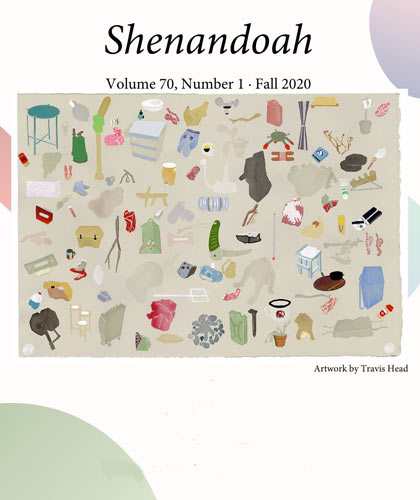Shenandoah – Fall 2007
Volume 57 Number 2
Fall 2007
Quarterly
Camilla S. Medders
A long poem by Wendell Berry, entitled “Sabbaths 2005,” opens this issue of Shenandoah. The poetry is exquisite, capturing what Berry refers to as “moments of pure awareness.” In the interview that follows, Birkin Gilmore engages the poet in an entertaining (for the reader at least) game of verbal dodgeball as he tries to get Berry to elaborate on his subject matter. Berry skillfully avoids most of the questions with responses like, “If [art is] any good, it’s happening pretty far beyond the sort of scrutiny that interviewers’ questions suggest.”
A long poem by Wendell Berry, entitled “Sabbaths 2005,” opens this issue of Shenandoah. The poetry is exquisite, capturing what Berry refers to as “moments of pure awareness.” In the interview that follows, Birkin Gilmore engages the poet in an entertaining (for the reader at least) game of verbal dodgeball as he tries to get Berry to elaborate on his subject matter. Berry skillfully avoids most of the questions with responses like, “If [art is] any good, it’s happening pretty far beyond the sort of scrutiny that interviewers’ questions suggest.”
The nonfiction in this issue is diverse, including an intellectual rumination on the act of writing, a rambling childhood memoir, and, my favorite essay, John Gamel’s meditation on death from a doctor’s perspective.
Sex and violence, those timeless themes, unite the short stories, and each deals with one or both of the themes artfully. In Pam Durban’s story, “The Jap Room,” the wife of a WWII veteran revisits the details of their life together. The narrator’s acceptance of her husband, faults and all, makes this love story touching and refreshing. “In the Blood” by Ron Savage is a haunting coming-of-age narrative. It’s also that wonderful, rare kind of story that seduces and surprises the reader, leaving you feeling somehow complicit in the events.
The poetry selection contains several gems, including Jehanne Dubrow’s poem, “Bargaining with the Wolf,” about the lasting effects of Prokofiev’s Peter and the Wolf on the narrator’s psyche. “…Old fears / still nibble with the sharpest teeth, / your three French horns, a leitmotif,” writes Dubrow, forever influencing the way I will remember that piece of music.
All this would be enough to make Shenandoah a satisfying read, but there’s also a selection of art by Bill Dunlap, accompanied by an entertaining editor’s note introducing the artist, and a generous selection of book reviews.
[www.shenandoahliterary.orgindex.html]


